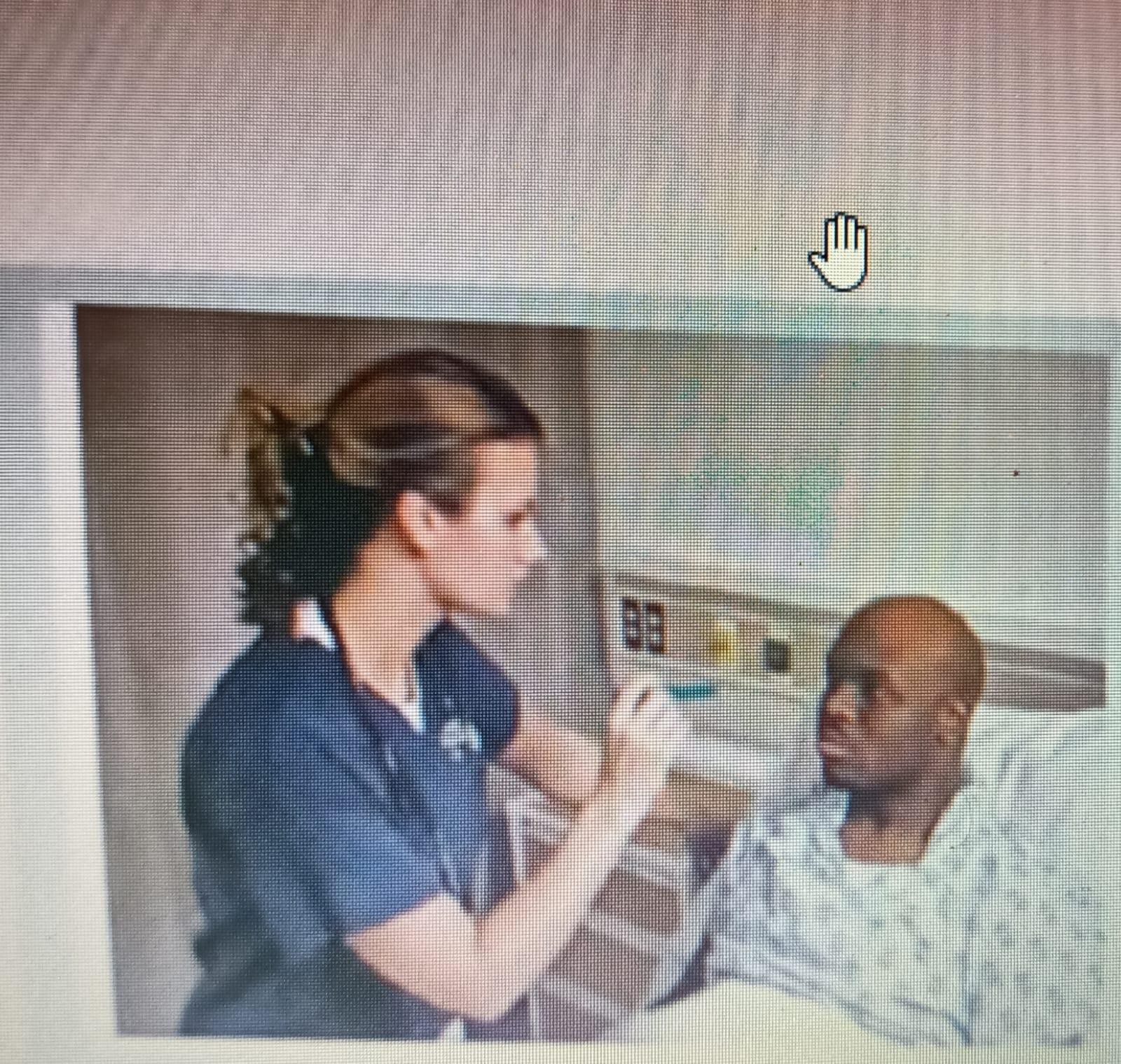Which client should receive the pictured examination first?

a client with nausea, vomiting, and abdominal pain
a client with chest tightness and heartburn
a client with facial drooping and left-sided weakness
a client with fatigue, fever, and productive cough
The Correct Answer is C
Choice A rationale: A client with nausea, vomiting, and abdominal pain may have gastroenteritis, food poisoning, or appendicitis, which are not directly related to the eyes.
Choice B rationale: A client with chest tightness and heartburn may have gastroesophageal reflux disease (GERD), angina, or myocardial infarction (MI), which are also not associated with the eyes.
Choice C rationale: A client with facial drooping and left-sided weakness may have a stroke, which is a medical emergency that requires immediate attention. An eye examination can help detect signs of stroke, such as pupil asymmetry, visual field defects, or eye movement abnormalities. A stroke can cause permanent brain damage or death if not treated promptly.
Choice D rationale: A client with fatigue, fever, and productive cough may have a respiratory infection, such as pneumonia or tuberculosis, which are unlikely to affect the eyes unless there is a systemic complication.
Nursing Test Bank
Naxlex Comprehensive Predictor Exams
Related Questions
Correct Answer is C
Explanation
Choice A rationale: This question is not relevant to BPH, as erectile dysfunction is not a common complication of this condition. Erectile dysfunction can have other causes, such as cardiovascular disease, diabetes, medications, psychological factors, or aging.
Choice B rationale: This question is not relevant to BPH, as penile discharge is not a symptom of this condition. Penile discharge can indicate an infection, such as sexually transmitted diseases, urinary tract infections, or prostatitis.
Choice C rationale: BPH is a condition that causes enlargement of the prostate gland, which can obstruct the flow of urine and cause symptoms such as difficulty in starting or stopping urination, weak or intermittent stream, dribbling, and incomplete bladder emptying. Asking about the force of the urinary stream can help assess the severity of BPH and the need for treatment.
Choice D rationale: This question is not relevant to BPH, as sexual function is not directly affected by this condition. However, some men with BPH may experience reduced libido or satisfaction due to urinary symptoms or psychological distress.
Correct Answer is D
Explanation
Choice A rationale: Gastrointestinal reflux disease is not typically a contraindication for sumatriptan.
Choice B rationale: Mild emphysema is not typically a contraindication for sumatriptan.
Choice C rationale: Hyperthyroidism is not typically a contraindication for sumatriptan.
Choice D rationale: Sumatriptan, a medication used for migraines, may elevate blood pressure, so it would be questionable for a client with hypertension.
Whether you are a student looking to ace your exams or a practicing nurse seeking to enhance your expertise , our nursing education contents will empower you with the confidence and competence to make a difference in the lives of patients and become a respected leader in the healthcare field.
Visit Naxlex, invest in your future and unlock endless possibilities with our unparalleled nursing education contents today
Report Wrong Answer on the Current Question
Do you disagree with the answer? If yes, what is your expected answer? Explain.
Kindly be descriptive with the issue you are facing.
